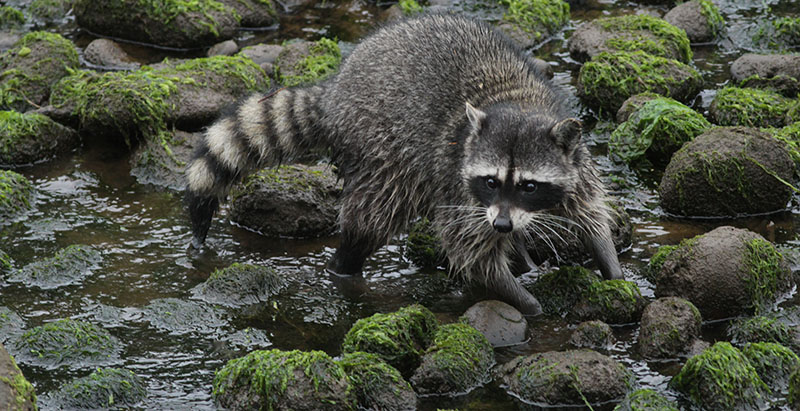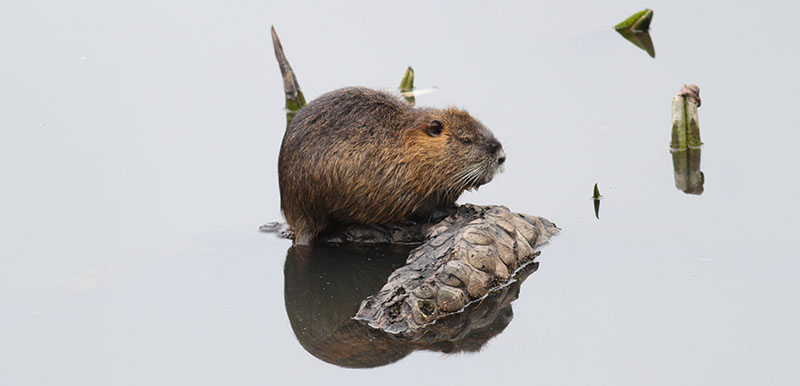What we call the Necanicum Wildlife Corridor is essentially the Necanicum River watershed: all of the land and tributaries contributing water to the river as it flows from its headwaters 2,800 feet above sea level in the Coast Range to the Pacific Ocean in Seaside. In addition to larger mammals, birds, fish, insects, and other animals, it is home to various small mammals. Here Gearhart naturalist Neal Maine shares some of his photographs and thoughts about these animals.

Coyote
“Even though small mammals have their own unique behaviors, feeding cycle, reproductive cycles, and exploitation of habitat, the one thing they share in common is their day-to-day survival.”

Raccoon
“Twenty-four/seven, they must find food, find mates, survive too-cold and too-warm temperatures, protect their young, maintain unique connections to their habitat, and in today’s world avoid being shot, poisoned, run over by vehicles, or attacked by their predators from on the ground or in the air.”

“For sure, being a small mammal is no walk in the park.”

Brush rabbit
“For the most part, small mammals can scratch off a few of the threats when they are in habitat managed by North Coast Land Conservancy. We spend a good bit of time checking on these animals, and you will be happy to know that for the most part they are doing well, with some element of their reproductive cycle being on display each year as we check in on them.”

Nutria
“When nutria were imported from South America in the 1930s for fur production, this action continued to demonstrate how little understanding we had, and have, about basic ecology. Thus today we blame the nutria for invading, rather than blaming society and its sense of owning nature as opposed to being part of global ecology. Nutria are not the enemy; a culture of ecological shortfall is.”

Coyote
You can learn more about any of these small mammals from the Oregon Department of Wildlife’s Oregon Wildlife Species website. In addition to those pictured here, Neal has seen long-tailed weasel, beaver, mountain beaver, mink, muskrat, river otter, spotted and stripped skunk, Oregon water vole, a variety of mice, and bats on NCLC properties. “Plus we caught a flying squirrel in a live trap at Coho Creek a few years ago.”
Comments